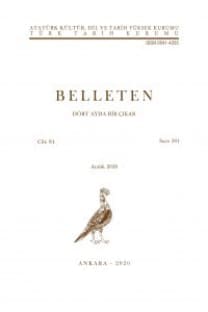Yok Olan Kültür Varlıklarımızdan Denizli’deki Kurşunluoğlu Konağı
Türk kültürünü en iyi yansıtan sivil mimarlık örneklerinden biri olan tarihi evlerimiz, Türk Toplumu’nun nesilden nesile aktarılan gelenek ve göreneklerinin yaşatıldığı yapı örnekleridir(1). Pek çok bölgede, depremler, yangınlar, ihmalkârlık ve yerlerine apartman dikme hevesi gibi çeşitli sebeplerle günden güne azalan eski evlerin Denizli’deki örnekleri de artık iki elin parmak sayısını geçmeyecek kadardır. Denizli kültürünün ve etnografyasının değerli varlıklarından biri olan Kurşunluoğlu Konağı(2), Denizli’de, 18 K2 pafta, 432 ada, 11, 12 ve 18 nolu parsellerde bulunmaktaydı.
One of our Dying Cultural Assets: The Kurşunluoğlu Konak (Mansion) in Denizli
The historical Turkish houses constitute the structural unit that passed on the Turkish customs and traditions from one generation to the next. Examples to these houses in Denizli have been to a great extent destroyed as a result of negligence, natural disasters such as earthquake and fire as well as due to the process of rapid change brought about by industrialization; the remaining houses are very few in number taking into account those in the Musa, Çaybaşı and Kayalık neighborhoods. The Kurşunluoğlu Konak (Mansion) in Denizli also constituted an example to these historical Turkish houses which had been destroyed due to a fire in 2004. The features and the materials used during construction closely mimic one another in the plans of these houses located in Western Anatolian cities such as Muğla, Birgi and Kula which are very similar to Denizli in terms of weather and occupation; that is to say, it is possible to determine similarities in the features in most of Anatolia and the Balkans. Constituting one of Denizli's cultural and ethnographical priceless assets, Kurşunluoğlu Konak also embodies these common characteristics. The only remnants from the konak that has reached to the present are the information and photographs mentioned in the article.
Keywords:
Denizli, Kurşunluoğlu Konak (Mansion) Cultural Assets,
- ISSN: 0041-4255
- Yayın Aralığı: 3
- Başlangıç: 1937
- Yayıncı: Türk Tarih Kurumu
